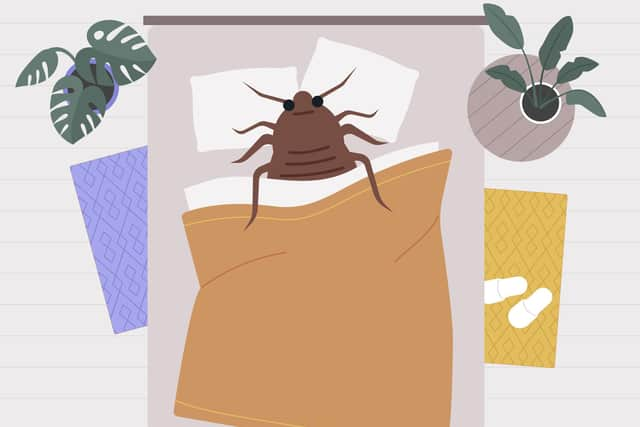Kirsty McLuckie: wake up to the dread reality about bedbugs
One in ten households in France is estimated to be hosts to punaises de lit as they are known – not great for a country currently hosting the Rugby World Cup and gearing up to be the base for the Olympics next year.
More worrying, for us, is that the critters themselves seem to be on the move, with alarming footage of London tube seats crawling with the unwanted passengers.
Advertisement
Hide AdAdvertisement
Hide AdI exclaimed, while getting caught up in the slightly hysterical coverage: “How long before they decide to change at King’s Cross and head North?”


I don't know whether or not it is reassuring to learn that, actually, bedbugs are already here.
The insects have made a comeback over the past 30 years in many developed countries, which experts believe is due to our increasingly nomadic lifestyles – as well as the trend for secondhand goods.
Pest control firm Rentokil has stated that it has seen a 65 per cent jump in bedbug cases in the UK in the second quarter of this year, compared with the same period in 2022. And analysis of Google searches for the term “bedbugs” suggest that Edinburgh already has a moderate infestation, while Glasgow’s is classed as high.
However, the results may be skewed by people like me, constantly panic-googling the term while reading the news reports and experiencing psychosomatic itching.
I don’t think I’ve ever actually seen a bedbug – described as flat and brown, about 5mm in length, and a beggar to get rid of.
I do confess, however, like many pet owners, that I have had to deal with fleas which was bad enough.
After the dog, and then the cat, began scratching, what followed was a two-week process of treating the pair of them, frantic repeated vacuuming, boil-washing bedding and cushion covers, putting larger items in the chest freezer for days, and then manically spraying insecticide into every corner of the house.
Advertisement
Hide AdAdvertisement
Hide AdWe fortunately triumphed over the invaders, just before I resorted to putting flea collars on the children.
Nevertheless, a DIY approach to bedbugs is not recommended, so it is doubly distressing – first finding you have them, then having to spend a small fortune to get rid of them.
The Checkatrade website estimates that a two-pronged heat and insecticide treatment would cost the average household about £1,000.
So prevention is definitely better than the cure. Some recommend diatomaceous earth which is made from microscopic algae. It’s a powder you put around cracks and crevices where bedbugs might be hiding.
If it gets on a bedbug it will lead to its demise through dehydration but – unlike more common bedbug spray treatments – diatomaceous earth is not poisonous, nor can the bugs build up an immunity to it.
For travellers, the advice is to avoid putting your suitcase on hotel beds or public transport seats, elevating luggage onto shelves where possible. On your return, before bringing your baggage inside, look for the bugs paying close attention to the seams and folds. And make sure to wash all holiday clothes on a high heat.
Equally, any secondhand furniture should be thoroughly inspected before it is allowed into your home.
Otherwise, that bargain pre-loved armchair or bed could end up being the most expensive item you have ever purchased.
- Kirsty McLuckie is property editor at The Scotsman